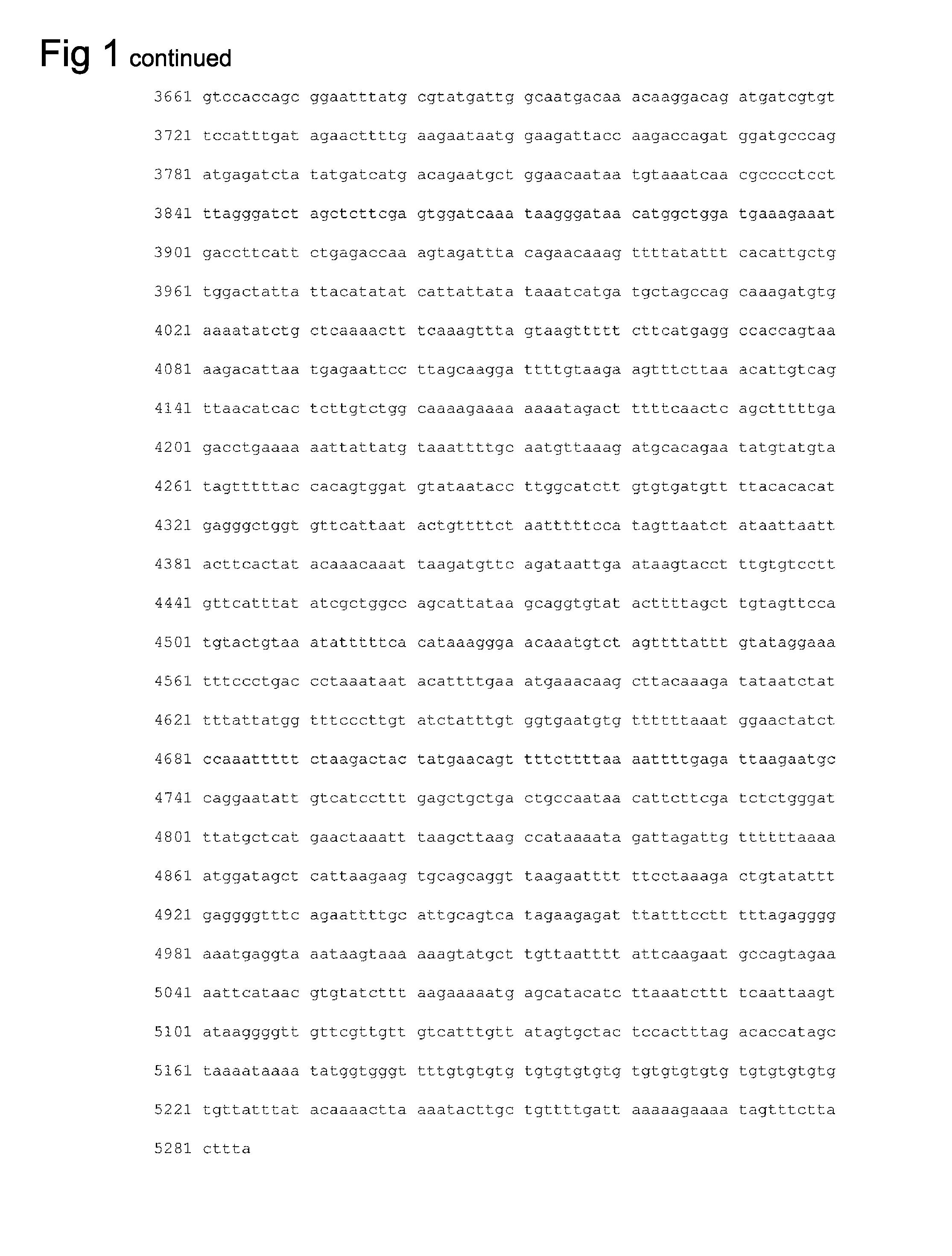Mutational analysis of JAK2
a technology of mutation analysis and jak2, which is applied in the field of genetic mutation analysis, can solve problems such as overproduction of white blood cells and platelets
- Summary
- Abstract
- Description
- Claims
- Application Information
AI Technical Summary
Benefits of technology
Problems solved by technology
Method used
Image
Examples
example 1
JAK2
[0052]The sequence of the wild type JAK2 mRNA sequence (SEQ ID NO 4) is given in FIG. 1. Residue 2343 is highlighted.
[0053]FIG. 2 gives the sequences of forward and reverse primers, and the probe sequence for binding to wild type JAK2.
[0054]The V617F mutation in JAK2 results from a G2343T mutation in the nucleic acid sequence. The probe binds to the region spanning this mutation; if the mutation is present (or indeed any other mutation in that sequence), then the Tm of the hybridised probe is lowered.
[0055]As is apparent, the probe sequence is fully complementary to the relevant wild type target sequence, and has one mismatched base compared with each of the possible mutant sequences. The mismatch is internal to the probe, rather than at either of the ends. The probe is a hyBeacon® probe, having a pair of fluorophores which alter their emissions when the probe is in a double stranded duplex compared with single stranded form.
[0056]A sample of DNA containing the JAK2 region is am...
example 2
Comparison With Other Tests
[0070]We conducted a comparison of the method described herein with other assays in order to determine reliability, accuracy, and sensitivity. Twenty blinded DNA samples for testing were obtained, and assayed using three different methodologies: 1. Genedrive assay (as described herein, using the Genedrive thermal cycling system from Epistem); 2. Genedrive assay using the Roche LightCycler 480 II; 3. JAK2 V617F MutaQuant kit (Ipsogen) on Roche LightCycler 480 II.
1. Genedrive Assay
[0071]Assay based on amplicon melt-curve analysis of WT and mutant peak heights. Blinded test samples analysed on Genedrive™, in singulate over three independent analytical runs on three different Genedrive™ units. V617F peak melting temperature (Tm)=56-58° C. JAK2 Wt peak Tm=61-65° C.
[0072]FIG. 6 shows example melt curves from wild type samples, and mixed wild type—V617F mutant samples.
[0073]FIG. 7 shows the thermal cycling steps used for analysis. Samples were run at 10 ng per re...
PUM
| Property | Measurement | Unit |
|---|---|---|
| volume | aaaaa | aaaaa |
| temperature | aaaaa | aaaaa |
| temperature | aaaaa | aaaaa |
Abstract
Description
Claims
Application Information
 Login to View More
Login to View More - R&D
- Intellectual Property
- Life Sciences
- Materials
- Tech Scout
- Unparalleled Data Quality
- Higher Quality Content
- 60% Fewer Hallucinations
Browse by: Latest US Patents, China's latest patents, Technical Efficacy Thesaurus, Application Domain, Technology Topic, Popular Technical Reports.
© 2025 PatSnap. All rights reserved.Legal|Privacy policy|Modern Slavery Act Transparency Statement|Sitemap|About US| Contact US: help@patsnap.com



